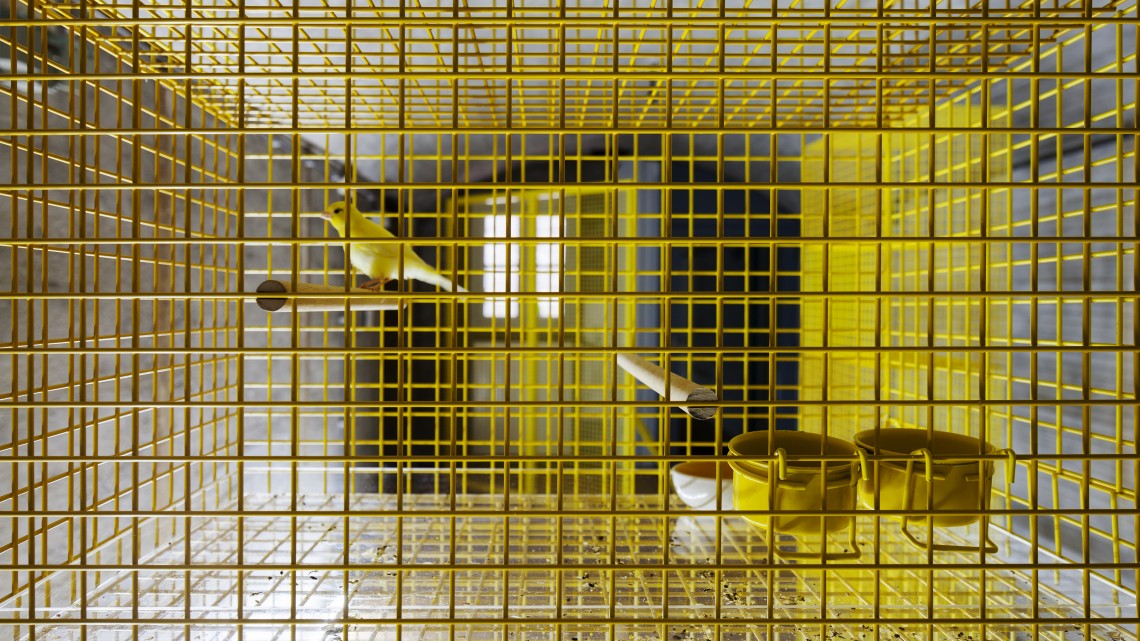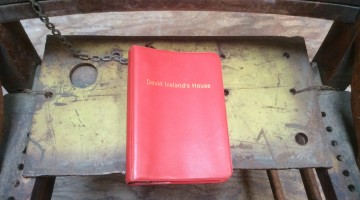Amsterdam, famous for its liberal drug policy and museums, is surrounded by a ring of 40 forts that were built between 1880 and 1920 as a defense line against the enemy—whoever that might turn out to be. Unfortunately, the invention of tanks and airplanes rendered these forts obsolete almost as soon as they had been completed, so they were never actually put to use.
One of these forts is the Kunstfort at Vijfhuizen which has assumed an alternative incarnation as a center for contemporary art. Apart from the permanent collection there are changing exhibitions and events all year round. Much of the art that is on display here comments on the military history of the fort. Now part of the collection there is a 500-yard path made of tombstones surrounding the main building, the Short Cut, along which death has managed to escape.
This piece was created for the event “Ruhezeit Abgelaufen,” a reference to the fact that in the Netherlands the lease on a graveyard space is up after 10 years, at which point the current inhabitant and their stone are evicted and someone new who has claims on the lot will be moved in. The artist Hans van Houwelingen collected the tombstones from families who lost that lease. Even though there are no bodies underneath the path it feels odd walking on these headstones that tell so many stories of the lives of people and their families.

Jurgen Bey, “Blob,” a collection of binary data expressed in a multimedia object that was part of the exhibition “Trailer Park.”

Jurgen Bey, “Blob,” a collection of binary data expressed in a multimedia object that was part of the exhibition “Trailer Park.”
Walking the trail of headstones one can see most of the art on the fort premises. Works on display include Serge Verheugen’s Lovegun that tells the story of a general that ended a civil war by bombarding the enemy with ecstasy and an impressive BLOB (binary large object) by Jurgen Bey. The Blob is a collection of binary data expressed in an architectural object that was part of the exhibition Trailer Park on mobile art objects. It is a kind of mobile pavilion that now doubles as a canvas for outdoor movie screenings.
Tom Claassen’s sculpture Wooden Men, six large pieces of wood that form the un-hewn shapes of soldiers fallen in combat and forgotten, again evokes thoughts of war and death. Exposed to the elements these large wooden figures are slowly decaying, echoing the fragility of the human body.
While the outdoor installations are primarily permanent, the changing exhibitions are mostly displayed inside the fort. The raw concrete walls pose some challenges to showing art, especially because the listed building must not be modified in any way, so if necessary additional walls need to be installed.
The last show, Size Matters, focused on minimal art, an art movement that focuses on pure form rather than references, and this type of art seems to almost work better in this setting than it would in a white cube. Here the role of art and space are almost reversed. The minimalist cleanness juxtaposed with the ancient wall work and the interspersed geometrical shapes add order to the irregular structures of the building.
One of the most touching and also controversial pieces is called A Canary in a Coalmine by Lucas Lenglet and features a heartbreakingly lonely bird sitting in a cage in a room all by itself. This being a work of minimal art there are no distractions for the bird besides the golden cages. The title refers to the practice of having a canary in the mines, which served like a litmus test for oxygen: when the canary dies it is time for the humans to evacuate. Concerned visitors actually informed the police and the staff had to convince them that the bird received regular attention, food and water.
But not all of the exhibitions are on matters of life and death. The next exhibition will focus on the area surrounding the fort and will include the manufacturing of beer and vodka using local potatoes.







